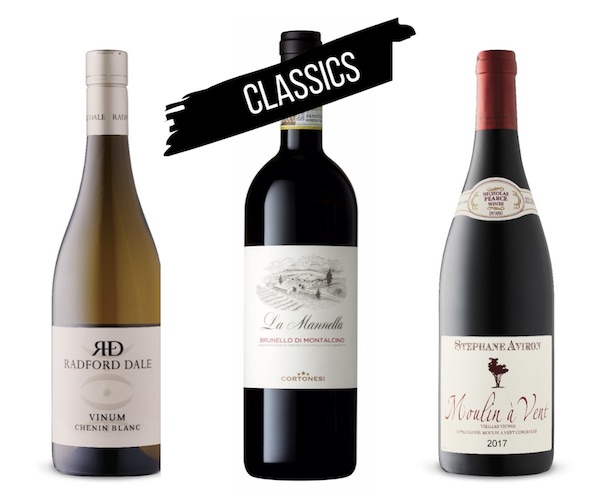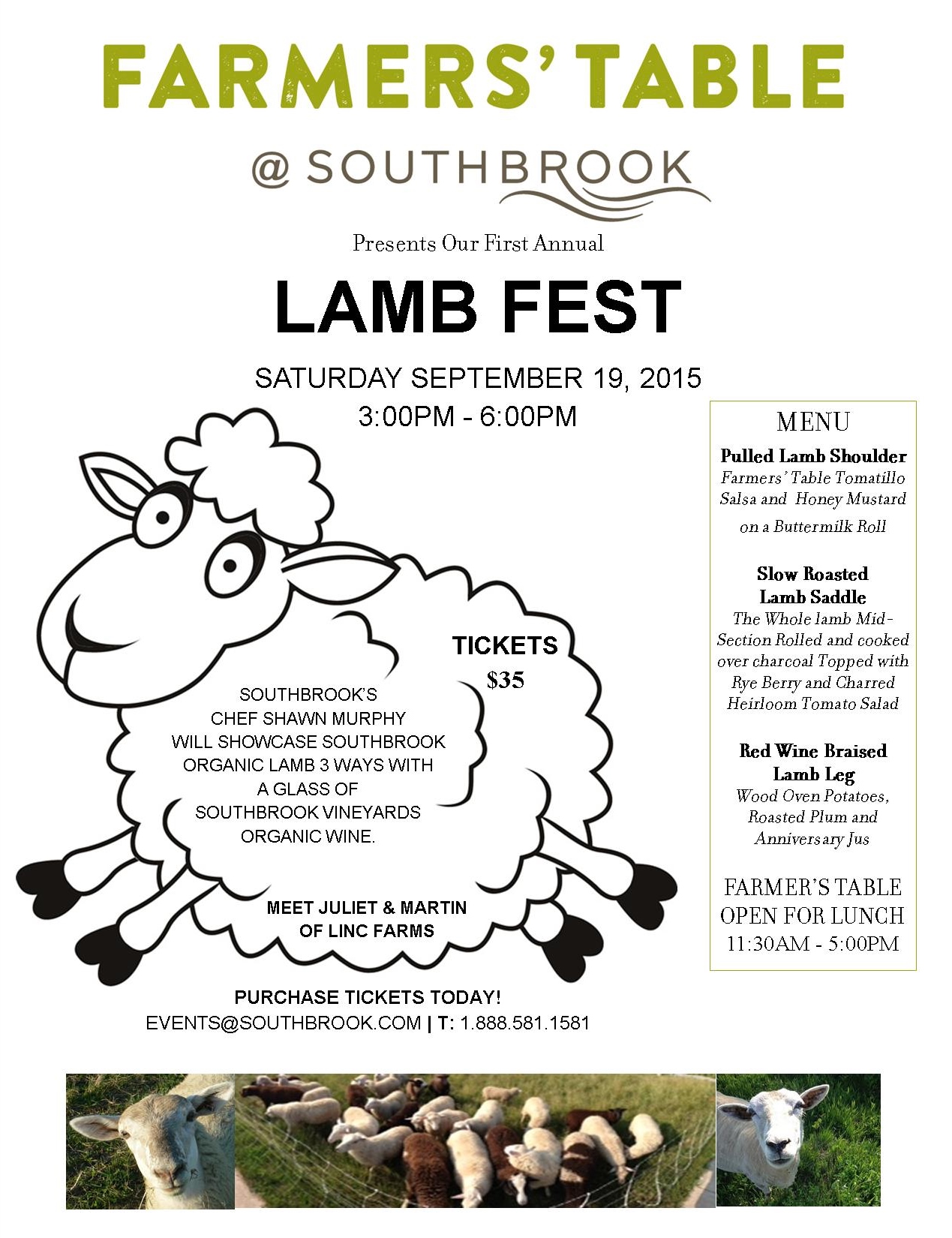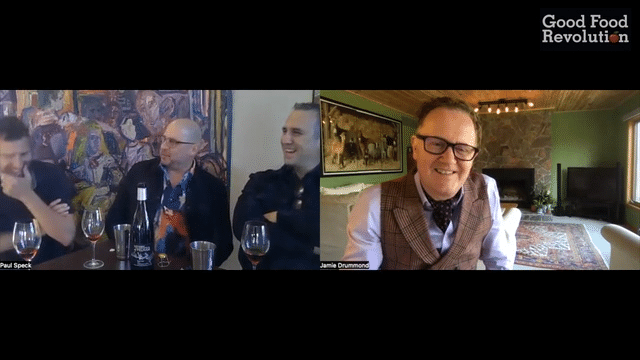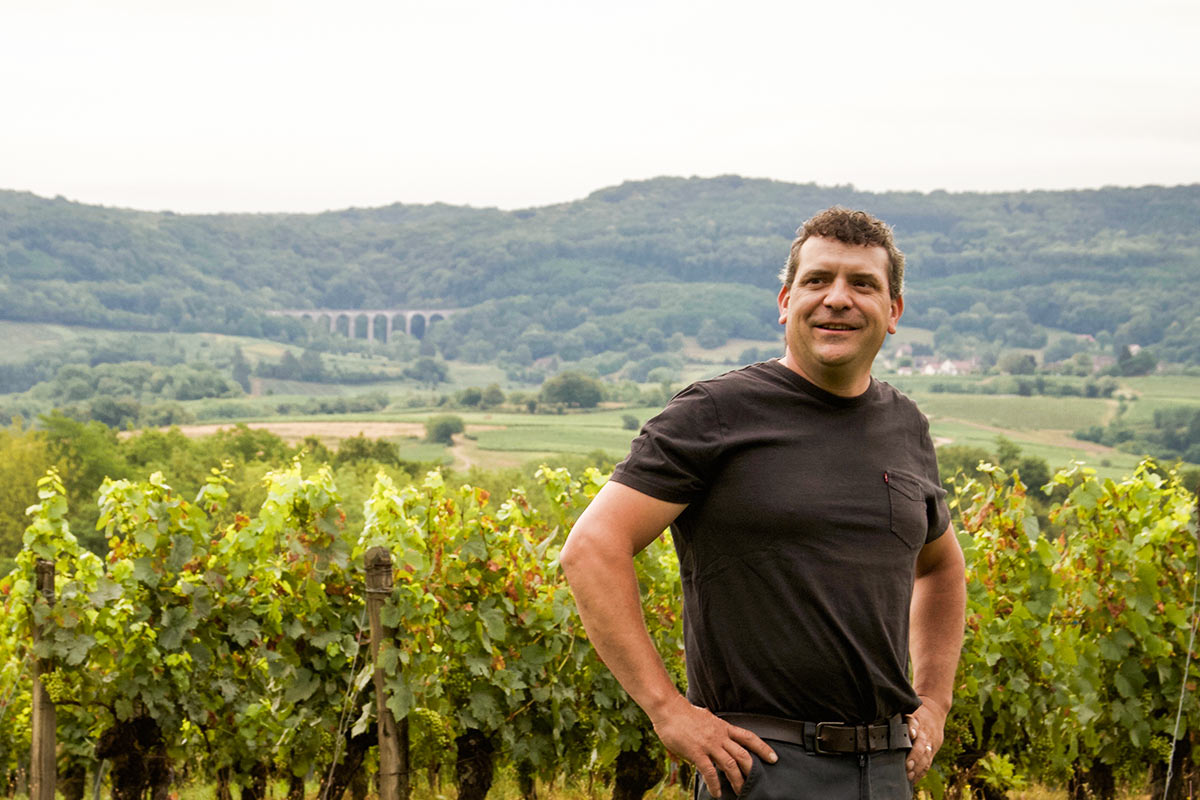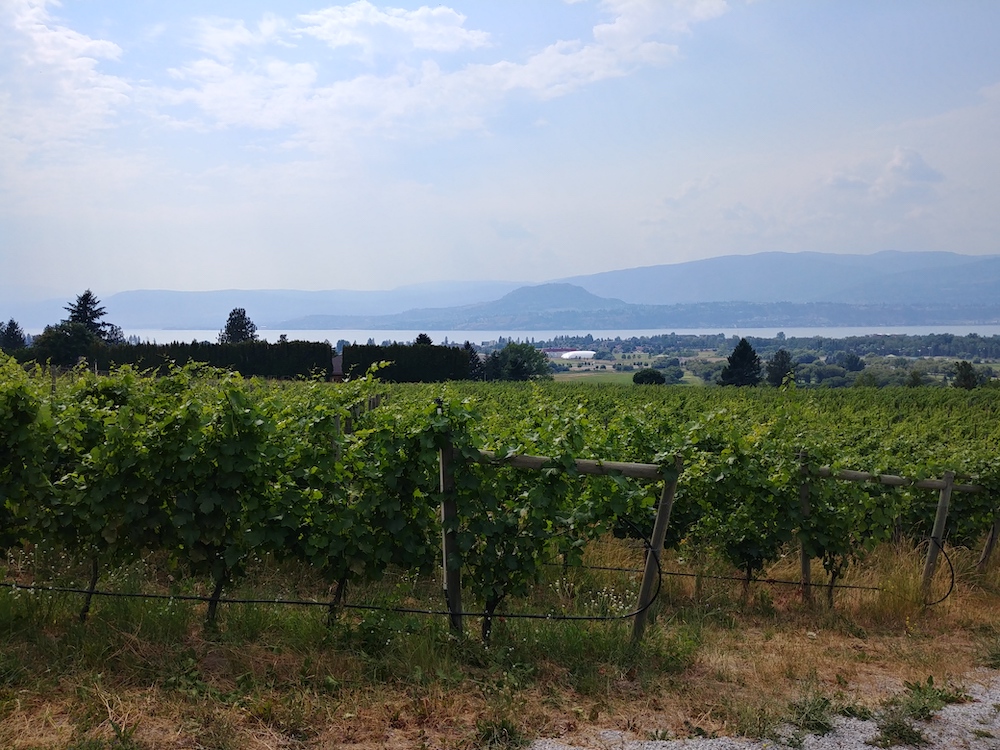
After a recent visit to British Columbia this summer, amidst another season of wildfires for the province and the unprecedented western heat dome, it became undeniably apparent to me that we are well on our way down the steep slope of climate change in a fully loaded trailer with dodgy brakes and few emergency runaway lanes for us to take. When I passed through the Okanagan during the first real season of mega-wildfires in 2003, I can recall the unprecedented feeling then. Now, COVID-19 pandemic aside, it’s been the end of the world as we know it for a while, and we’ve been feeling fine all the way.
It is amazing how quickly human beings can adapt to the idea that out-of-control wildfires or climate change are “the new normal”. There is nothing normal about it. Looking at the dendrological record in British Columbia, post-1863 and into the twentieth century marked a momentous shift from Indigenous fire stewardship to European settler fire exclusion and suppression practices. Without the Indigenous cultural practice of burning low-to-moderate-severity fires, coupled with lumber company demand for dense re-plantings with closed canopies that are vulnerable to high-severity fires, the prospect of drier and hotter summers due to climate change poses a disastrous future not only for the vineyards of BC but for the entire ecological stability of that region.
One of the direct impacts of wildfires on the vineyard is smoke taint. The idea that smoke taint could be a part of terroir rather than a viticultural hazard was floated first several years ago in Oregon. I’ll unpack and explore this notion further in a follow-up article.
There’s a common story told about the difference between wine from Ontario and wine from British Columbia. In the quiet Ontario landscape, the older, cooler east, the grapes aren’t as ripe and retain more acidity. In the West, the landscape is newer and heroic, the climate warmer and drier and the grapes are sweeter and produce bigger and richer, specifically red, wines.
This story is frequently marshalled to support the idea that red wine drinkers prefer wine from British Columbia to wine from Ontario. Indeed, British Columbians do drink all the BC wine and BC Vintners Quality Alliance (VQA) Wine dominates wine sales in British Columbia, whereas in Ontario, some wineries still struggle to match the purple-stained palates of much of the province.
Inevitably, for this particular market segment, it’s often all about the “Cab Sav”. Three of the most popular wines in the LCBO are from California: J.Lohr Seven Oaks (13.5%, 5 g/l residual sugar), McManis (13/5%, 9 g/l residual sugar), and Apothic (13.5%, 15 g/l residual sugar). All three of these wines show oaky, ripe, and jammy black fruit. Other wines from around the world made from grapes besides Cabernet Sauvignon fit the same mold, too. The successively popular red wines with inexplicably high scores in the LCBO show similar profiles: Yellow Tail (13.5%, 10 g/l residual sugar), Fuzion (13%, 8 g/l residual sugar), Toro Bravo (13%, 8 g/l residual sugar).
These wines are frequently derided as “fruit bombs”, a term which connotes a definitive inelegance, an indiscriminate, excessive explosion of fruit and a concomitant lack of delineation and structure. They are also commonly associated with warmer non-European wine regions, even if there is a little “New World” heat now in Europe as well, especially around the Mediterranean. More heat usually results in riper grapes, which means more sugar, which means more alcohol.
Crucially, however, the explosiveness of these wines is not defined by excessive alcohol alone (measured as a percentage of alcohol by volume), as some believe, but also by the residual sugar left in the wine after fermentation (measured in grams per litre). Most wines clock in at around 3-6 g/l of residual sugar (fruit juice and pop are regularly measured at 110 g/l), and all the aforementioned wines, except the J. Lohr Seven Oaks, have a noticeable sweetness.
Why are these fruit bombs so popular? A little more residual sugar helps to mask the natural acidity of wine itself, making the wine more palatable. Alcohol does have its part to play too, as most of us perceive the taste of alcohol as sweet. Since it is acidity (along with tannin for red and orange wine) which helps to give wine its structure, suppressing it with sweetness is why the fruit in these wines so often seems unrestrained and unfocused.
The mystery and source of confusion which lies at the very heart of wine and that keeps us coming back to solve in the glass is this fundamental proposal: here is a drink which is fruity but dry. The fruit bomb presents no such confusion or intrigue to the drinker.
So, is this what makes BC VQA red wines so popular with British Columbians as opposed to the struggle Ontario VQA reds have with many Ontarians? Is it because they’re fruit bombs like these Californian, Argentinian, Spanish, and Australian wines and appeal to a certain fruit-juice palate? Is it because, as the story goes, Ontario makes cool-climate wines, more closely resembling those bone-dry Euro wines whereas BC’s warmer interior climate, getting warmer by the year, pumps out the sunny sweetness?
But fruit is sweet! It’s why we love it. What’s so wrong with a wine, then, which is made from fruit, being fruity? The riper, the better! If wine connoisseurship has its head up the fetishization of dry wine, it’s because of an out-dated European aesthetic, limited by its own ascetic climate. Why can’t we just stop worrying about structure and balance and learn to love the fruit bomb in our glass?
I am firmly of the school that the best wine is the wine on the table, and that when you are in Rome you shouldn’t be looking to drink Burgundy. So, yes, relax, toss an ice cube in your glass and enjoy your fruit bomb, but don’t you for a second believe that BC only makes wine like this or that Ontario doesn’t have its own share of vinicultural ordnance.
And the story that Ontario is cool and BC is warm? That’s only partially true. Growing degree days are used to estimate the growth and development of plants by measuring the days above a certain base temperature (10ᵒC). The Northern Okanagan has fewer growing degree days than Prince Edward County and the Southern Okanagan has fewer than Niagara. A short, hot growing season with very little moisture is how the BC interior can best be summed up, but it is that lack of moisture (exacerbated by climate change) which constitutes the major difference between the two regions and allows BC to excel in the later-ripening grape varieties.
The mainland BC wine regions receive very little precipitation due to the coastal rain shadow and the folded mountain and valley land running north/south, baffling the weather and providing unique meso-climates. Vineyards planted on the east slopes of these folds are warmer than those on the west side because they receive the warmer afternoon sunlight, especially into the long summer evenings. Eastern slope plantings are frequently harvested as much as two weeks earlier than those on the west slope.
Winemakers in both regions will relish their terroir and the short growing season given them while some others may seek to escape or emend it to cater to the “Cab Sav” crowd. Some embrace the heat given to their grapes, while others look towards cooler sites, and it may be that some Okanagan vignerons will now prioritize vineyard plantings on the western slopes of the valleys rather than the east.
For now, climate change is evident in the vineyards of BC in the shift of the Southern Okanagan region from cool climate viticulture to intermediate just in the past few decades. The Northern Okanagan is now on the threshold of a similar shift. This will likely result in a move away from cold-hardy hybrids to Vinifera varieties better adapted to heat stress.
The vineyard sits very neatly at the intersection between the human world of economy and the natural world of ecology. The wine industry, invested in both worlds, has understandably been at the forefront of climate change science. It’s crucial that we keep the unbearable truth of climate change in front of us and not became inured to it if we are ever to effect change in our political and economic worlds and so save the one world of the vineyard from this headlong rush towards disaster.
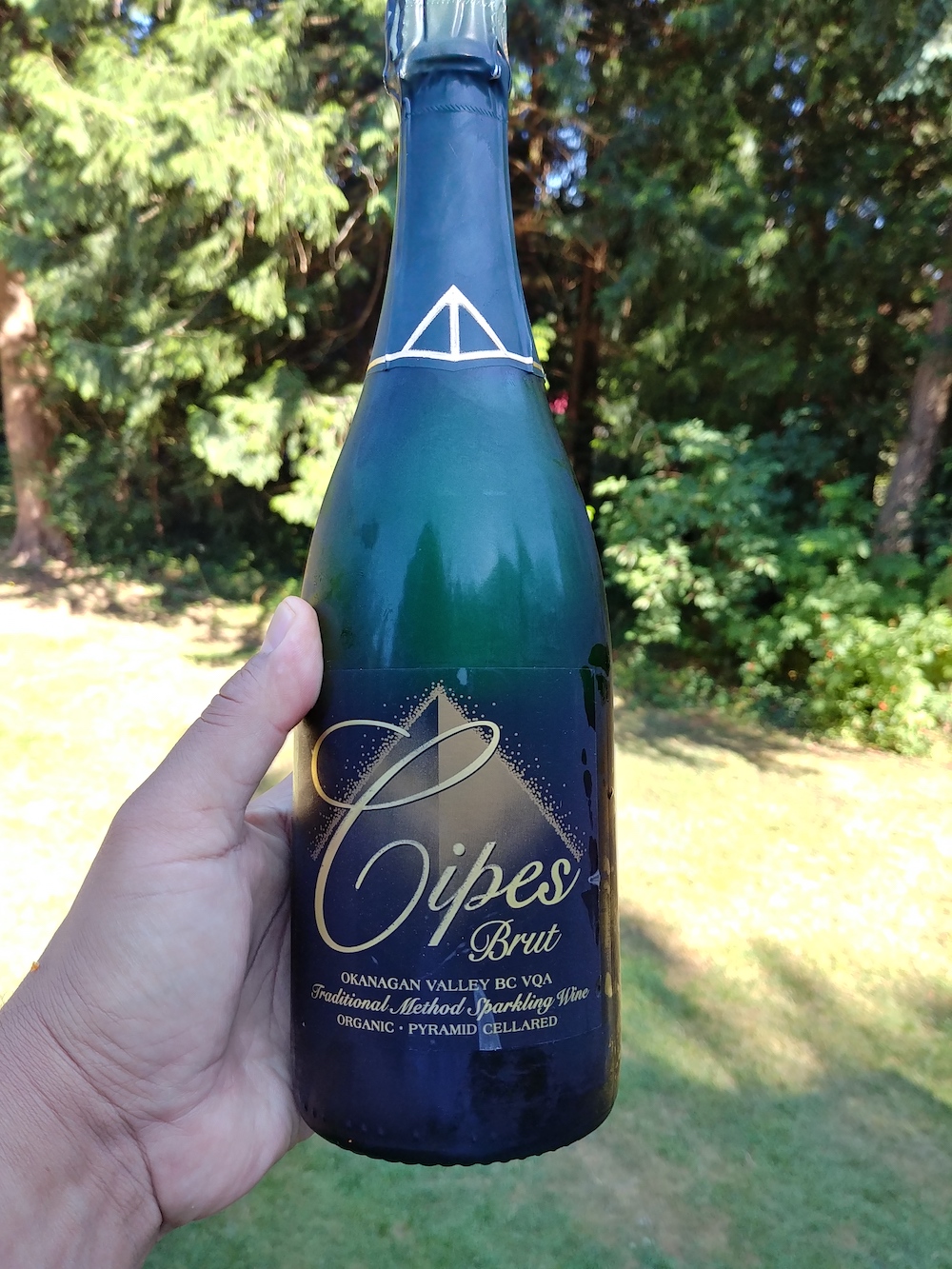
Cipes “Brut NV” Okanagan Valley VQA $29 winery
Apple, brioche, lavender, high acid, lemon cookies, and rosemary, from Riesling, Chardonnay, and Pinot Blanc; on lees for 12-18 months. Ubiquitously reviewed, this is the Henry of Pelham Cuvée Catherine of the West, an all-rounder, affordable, go-to bubbly.
![]()
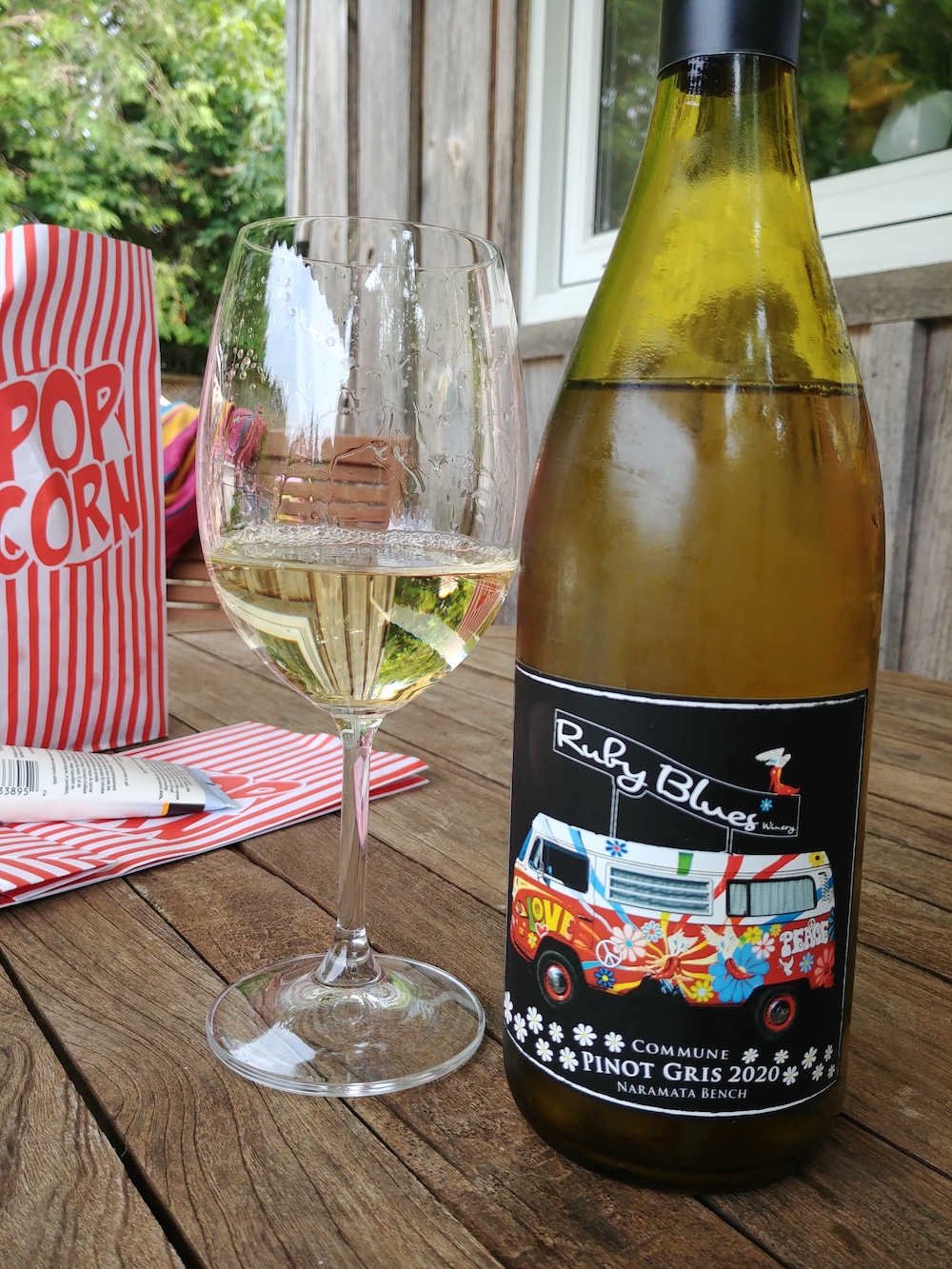
2020 Ruby Blues “Commune” Pinot Gris, Naramata Bench VQA $21.90 winery
In 2007, Prudence Mahrer started Ruby Blues Winery with the small vineyard property she retained after selling Red Rooster Winery to Andrew Peller two years prior. Slight copper tinge, dry, sapid, savoury, apple, nectarine, herbal, spice, low alcohol (12.7%) intense, very good, more-ish.
![]()
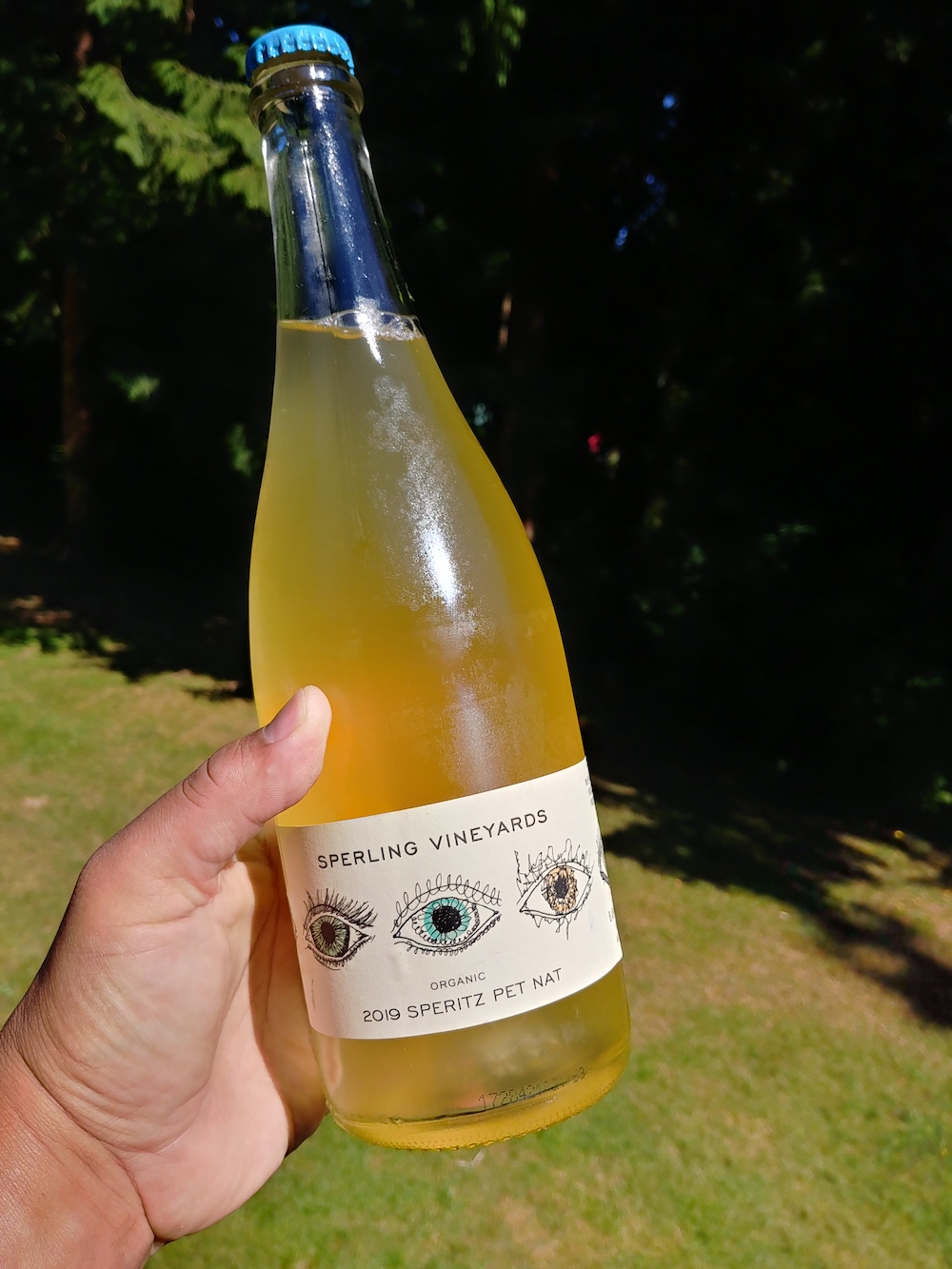
2019 Sperling Organic “Speritz Pet Nat”, Product of Canada $30 winery
From 85% Perle of Csaba (first planted in 1934), and 15% Chardonnay. A lovely summer sipper at 8.3%. Cloudy, nectarine, tangerine, peach, tart, high acidity, lemon drops, low alcohol, mineral, salt.
![]()
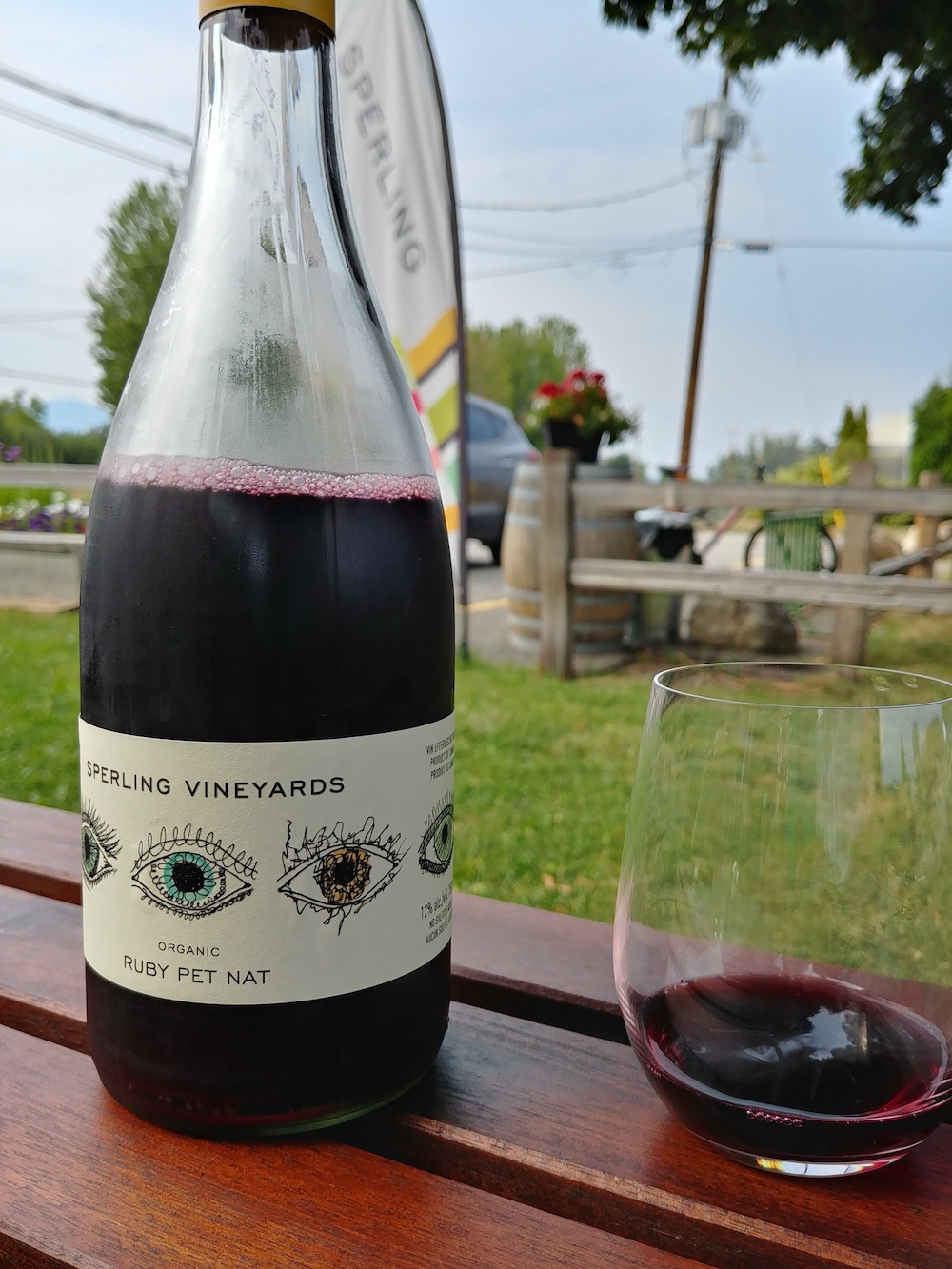
2020 Sperling “Ruby Pet Nat”, Product of Canada $30 winery
From 85% Maréchal Foch, 15% Pinot Noir. Very Foch, ripe blueberry, boysenberry, jammy fruit given some clarity by the slight effervescence and balanced by medium-low alcohol (12%). Would love to try with a lamb burger and feta cheese.
![]()
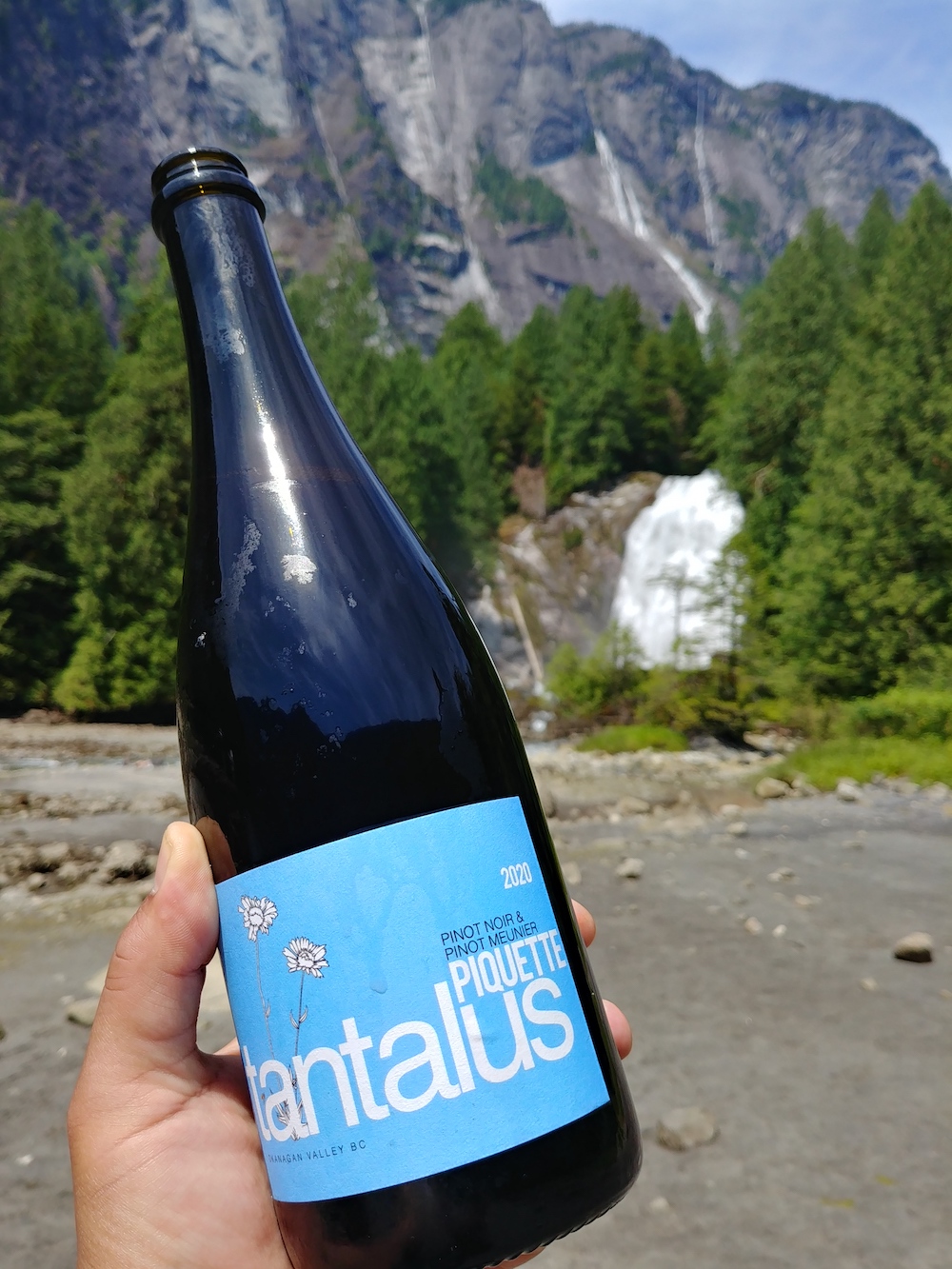
2020 Tantalus Piquette of Pinot Noir and Pinot Meunier. Okanagan BC $17.39 winery
From the skins and stems of Pinot Meunier and Pinot Noir used in the rosé, another slightly cloudy, slightly effervescent low alcohol (6.1%) thriller with cranberry, raspberry, and rhubarb notes, high acidity, and a salty, sour cherry finish. The perfect day-drinking picnic wine drunk chilled with fresh fruit, cheese, charcuterie, and baguette.
![]()
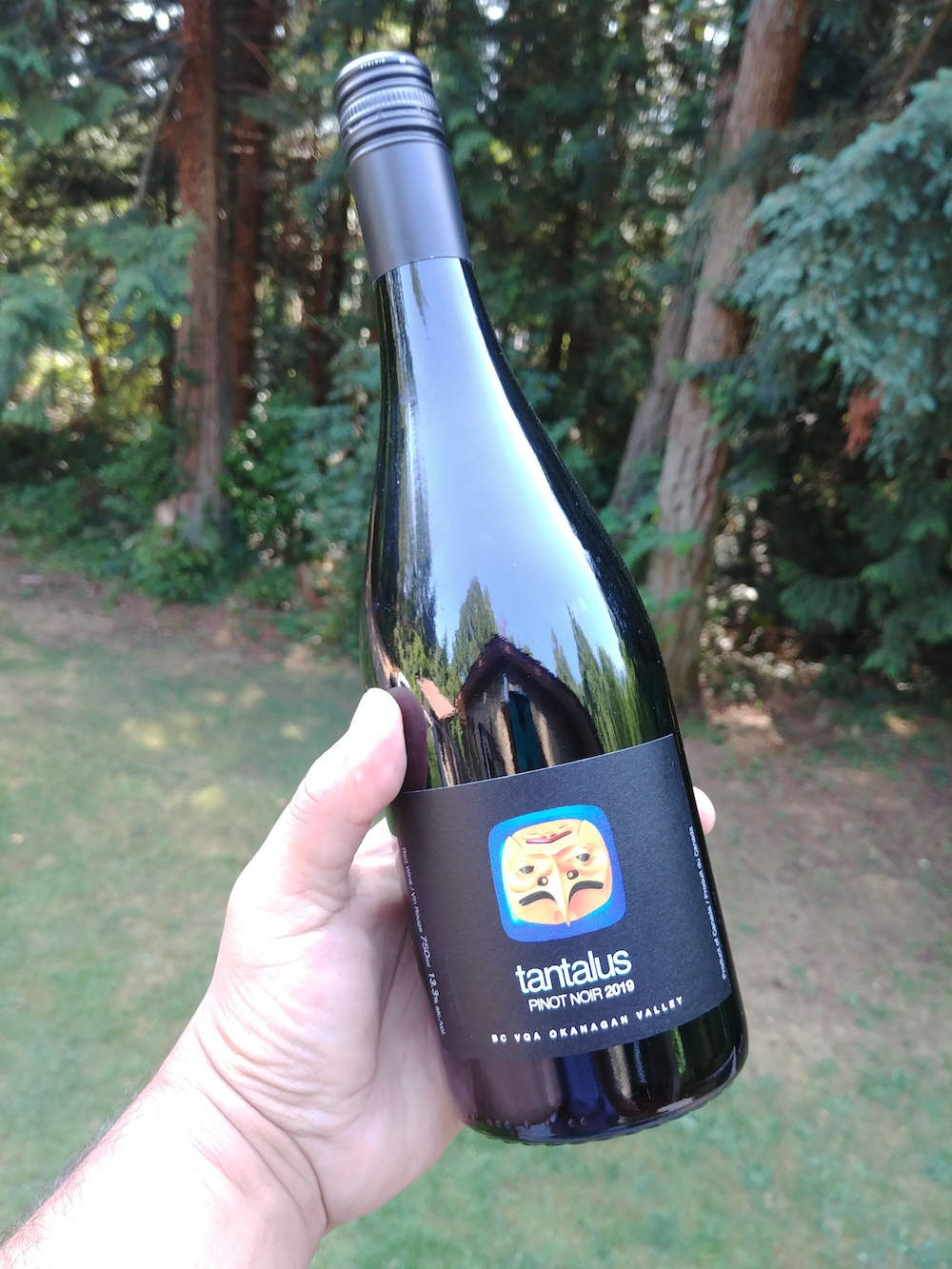
2019 Tantalus Pinot Noir, Okanagan Valley VQA $33.04 winery
Pale ruby, enticing aromas of cranberry, pomegranate, rhubarb, red cherry, and cinnamon. Bone-dry (1.11 g/l), medium alcohol (13.3%), tight acidity, medium-low tannin, a real high-wire act, a crystal ball to see the terroir through.
![]()
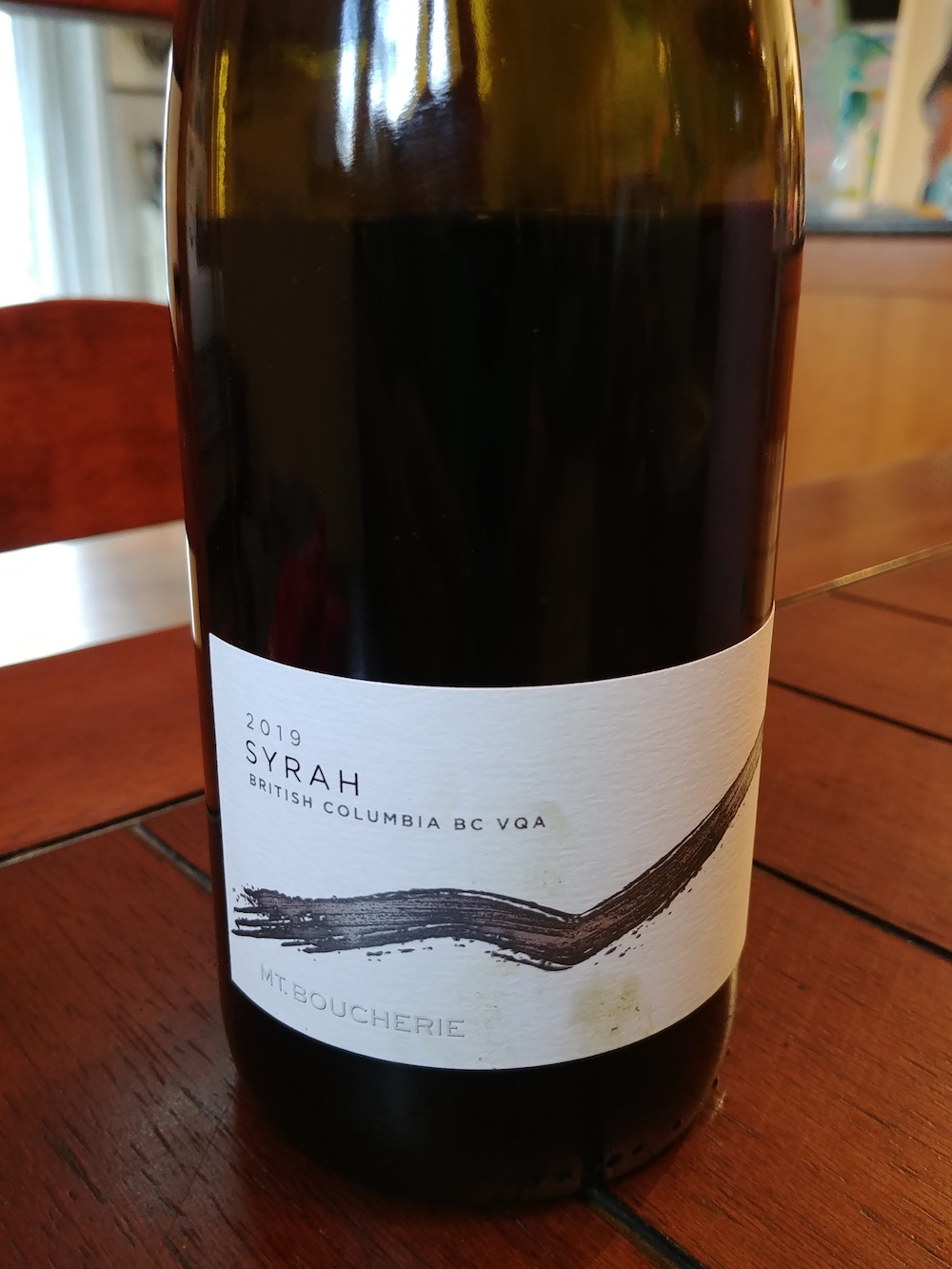
2019 Mt Boucherie Syrah, BC VQA $19.99 BC Liquor
Everyday, well-balanced red from multiple sites in South Okanagan and Similkameen valleys. Good varietal typicity, showing black cherry and pepper offset against medium ripe tannin and medium-high acid. Smashing with burgers.
![]()

2018 Three Sisters Gamay, Naramata Bench VQA $24.90 winery
This wine does an incredible impression of Pinot Noir; the oak and red fruit meshing to produce that velvety strawberry cola note I often get in Northern California Pinot. Sane alcohol, dusty and dry tannins refreshed by good acidity and intense red cherry fruit, almost Ribena; everything in balance, with only that telltale pepper note of Gamay peeking out from behind those aforementioned velvet curtains. I want to have this with duck confit, serve it in lovely Pinot glasses and then surprise people by telling them it’s Gamay.
![]()
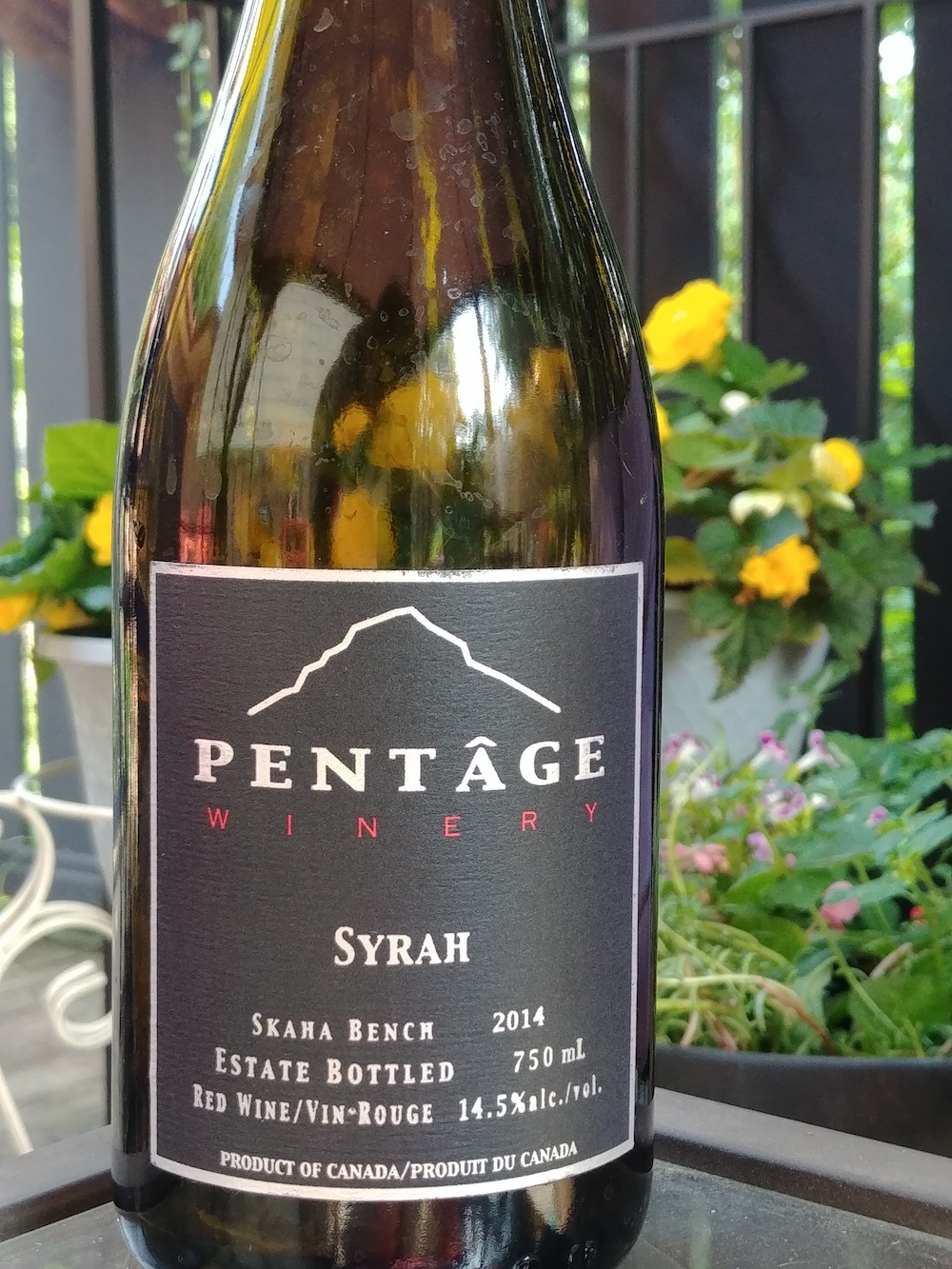
2014 Pentage Syrah, Skaha Bench VQA Current release 2015 winery $24.35
Blackberry, developing nicely but still young and fresh, added layer of leather, spice, fruit up to the challenge of the 14.5%abv. Intense, concentrated, medium supple tannin, high acidity, juice, blueberry pie, black raspberry, black currant bud. A fruit bomb made interesting by age.
![]()
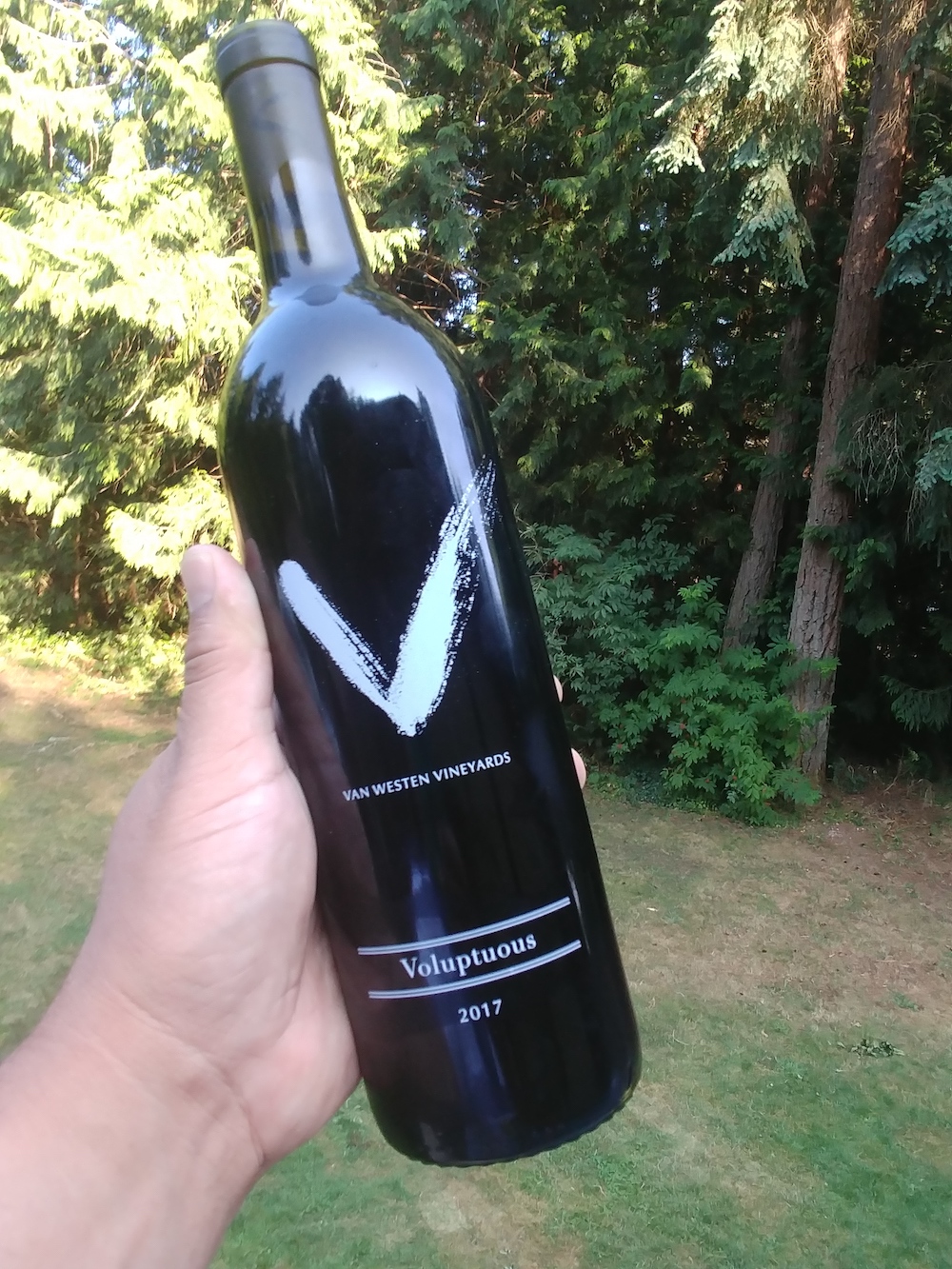
2017 Van Westen “Voluptuous”, Naramata Bench VQA $34.90 winery
67% Merlot 33% Cabernet Franc. Really finely tuned and calibrated, hiding 14.8%abv very well beneath the bonnet of rich, sleek fruit from 22yo vines. Aged in French oak barrels for 21 months from the Boothe Road vineyard a stone’s throw from the winery. Despite the trademarked name and its suggestion of other ‘bodacious’ or ‘velvet’ wines catering to a certain kind of wine drinker, this goes down like ripe Right Bank Bdx, only missing the rusty edge commonly associated with some of those wines and instead finishing smooth and well-managed. Very Drinkable.
![]()
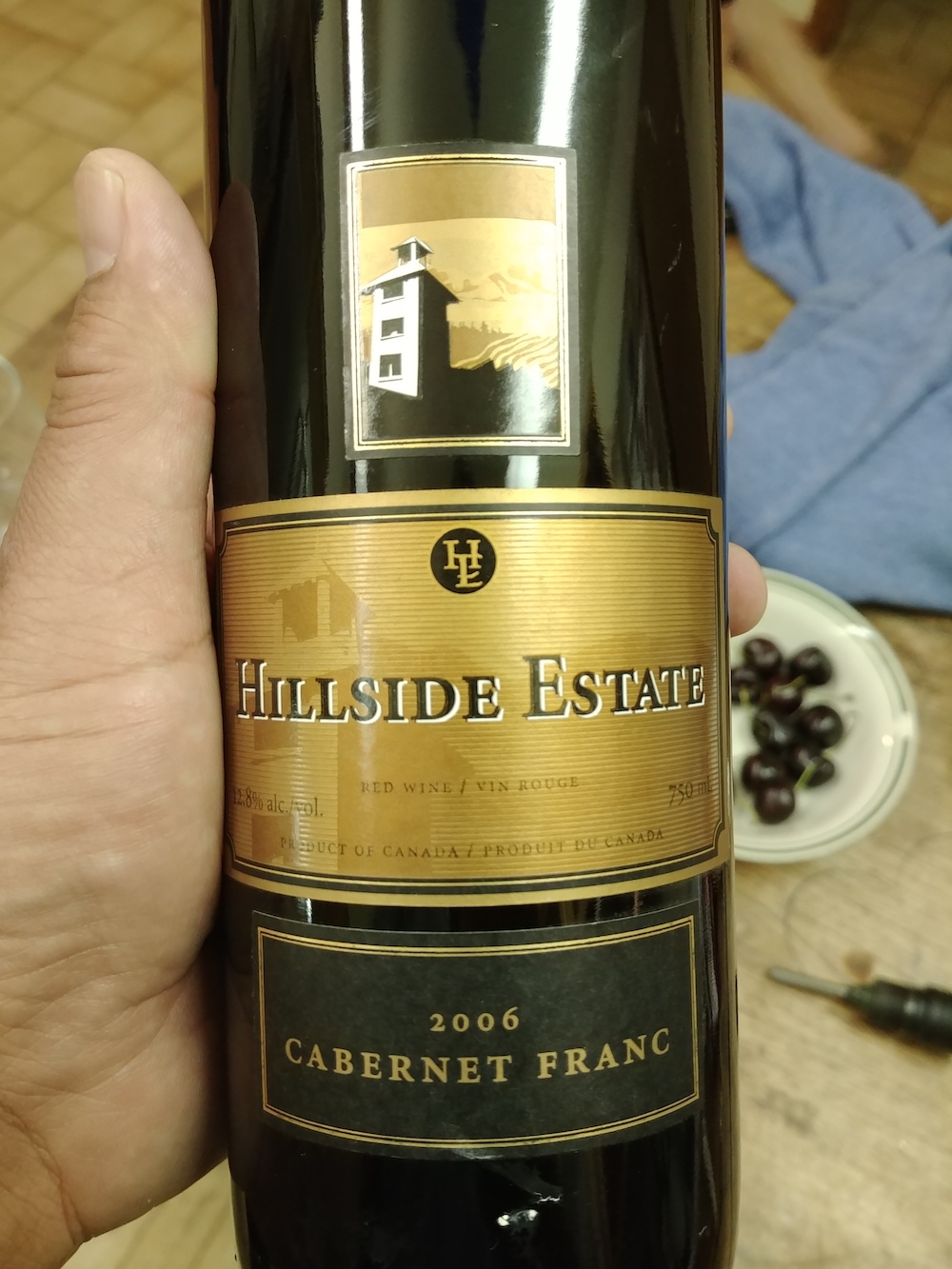
2006 Hillside Estate Cabernet Franc, Naramata Bench VQA Private cellar
12.8%abv; 9 months American oak. Pale garnet, cherry, dark chocolate, crushed violets, dark cherry, juicy acidity, dry and tannins resolved, dusty, cherry cola, cocoa nibs, med alcohol, pressed dry flowers, balsamic, sour cherry finish, med length. A little over the hill, but lovely to taste a lithe Franc with age.
![]()
(All ratings are out of a possible five apples)



